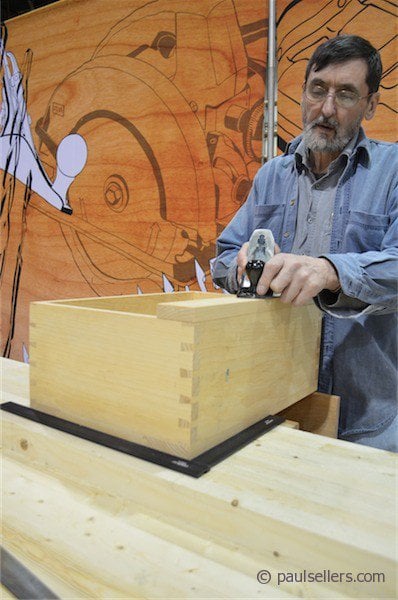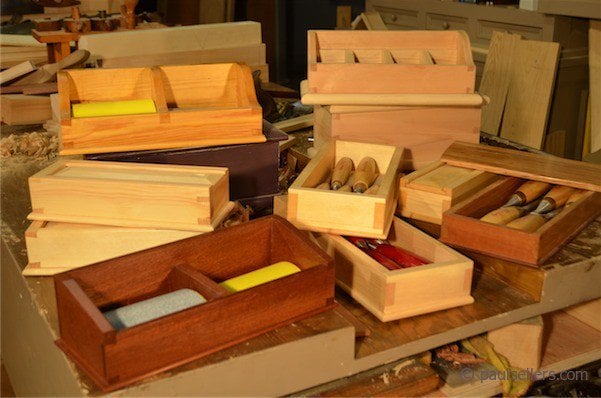More Pins than Tails
More tail makers than pin makers
Of course there are always more pins than tails, that goes without saying, but does the tail wag the dog? In the overall scheme of things I might reason that in over 97% of cases, woodworkers cut the tails first and make the pins follow. So in this case, the tails predetermine that pins follow the tail in like fashion that form always follows function in the real world of non-fantasy craftwork. I am constantly reading (and being told) that there are two ways to cutting dovetails and people are always telling me there are many ways to do this or that and that there is no one right way if both ways work.
These are the projects we made through the woodworkingmasterclasses.com series two months ago. Some students in last week’s nine-day Foundational Course workshop (just completed Sunday) found themselves surprisingly ahead of those who had not yet discovered this teaching resource.

Have I ever used a router for cutting dovetail joints?
Never. Two people have told me that to be a teacher true to my cause I should have at least tried it once. One was a magazine editor and the other a woodworking teacher who taught machine only methods. It doesn’t take me too long to determine what takes skill and brings peace and what is quite dull and uninteresting. It’s kinda nice to be able to say after 52 years since I picked up tools that I never cut a dovetail by machine. A close friend of mine, a highly skilled professional hand tool specialist, still laments the day he made a dresser with 8 drawers in it using a router and dovetail jig for the first and only time. He was instructed to get the price down by his bosses and he was slow but good.
I think ofttimes it is true that we stick to the first method we were taught and indeed if you sat under one woodworkers instruction you might adopt his method even though it might be the least popular of the methods available. Of course we all know that that’s not necessarily the best or right method, but hopefully we will be open to considering other methods, try them, and make a decision responsibly. I did look at a router one time to see if that was where I wanted to go. I am as much an expert in machine woodworking as I am in hand tools, so that wasn’t an issue, and I indeed use a router for some tasks, about once a year I suppose, but routing when it’s unnecessary or it substitutes for developing skill is not an option for me. There I draw the line. Now, having said that, it is not too late for anyone to master the skills and in reality this is indeed so much easier than you might think. Today I sharpened 18 dovetail saws in 42 minutes ready for the next dovetail class in three weeks time here in the USA. From this time on I have just decided that students can bring their own tenon saw and file and sharpen their own personal saws. I will teach them this, I will teach them to cut dovetails and they will have the skills for the remainder of their lives. How about that!


I think the idea of teaching the sharpening as well as the dovetail construction is great. I would love to spend some time with someone proficient in saw sharpening. I’ve finally gotten better at sharpening chisels and have come to truly appreciate the value and pleasure of a sharp tool.
It’s funny how you say there is no skill in the use of machine cut dovetails as I have done all three I assure you are wrong all tasks require a learned skill.
Last year I built a series of boxes for a recessive tall book case. Each box had four corners with mitered dovetails. I used the plan from Popular Woodworking’s article and plan by Chris Schwarz. This was my first try at dovetails. I finally finished a total
of nine boxes of different heights and depths. Wow, did I learn that dovetails first is the way to proceed. Of course, their were many mistakes in the learning process of joining all this together. Only another woodworker would see or find them. Thank you for all your encouragement. You are a treasure to the profession, Professor.
Regards,
Jim Childress
Upper Dublin, PA (Phila, PA)